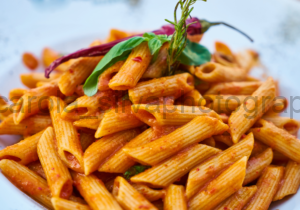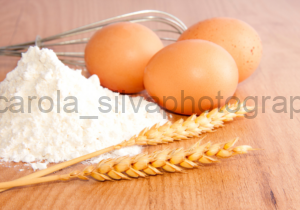Pasta. A word that brings joy to many and memories of warm family dinners and gourmet experiences. But have you ever wondered about the artistry behind creating this beloved dish? Welcome to our in-depth guide on pasta making, where we blend time-honoured traditions with contemporary innovations. Whether you’re a pasta lover, foodie, or home cook, this blog will provide valuable insights into the captivating world of pasta.
 The Timeless Appeal of Pasta
The Timeless Appeal of Pasta
Pasta is more than just food; it’s a cultural icon. Its origins trace back to ancient civilizations, where it was cherished for its versatility and nourishment. Today, pasta remains a staple in many households worldwide, transcending borders and culinary traditions. But what makes pasta so timeless?
Pasta’s simple ingredients—flour and water—transform into an endless variety of shapes and textures, each suitable for different dishes. It’s this versatility that makes pasta a favourite comfort food, celebrated in countless cuisines. From Italian classics like spaghetti carbonara to Asian-inspired noodle dishes, pasta’s appeal is universal.
In this blog, we’ll explore traditional pasta-making techniques that have stood the test of time and modern twists that add a new dimension to this age-old craft. Whether you’re looking to master the basics or experiment with innovative recipes, we’ve got you covered.
Traditional Pasta-Making Techniques
Selecting the Right Flour
The foundation of any good pasta is its flour. Traditional pasta recipes often call for durum wheat semolina, known for its high protein content and ability to hold shape. This gives pasta its unique texture and bite. However, other flours like all-purpose or ’00’ flour can also be used, each contributing different qualities to the final product.
Choosing the right flour is crucial. It affects not only the texture but also the flavour of your pasta. Semolina flour imparts a slightly nutty taste, while ’00’ flour offers a silky-smooth texture, ideal for delicate pasta like tagliatelle. Experimenting with different flours can help you find the perfect balance for your homemade pasta.
Hand-Rolling and Cutting
Hand-rolling pasta is an age-old technique that connects you directly with the dough. It requires practice and patience, but the results are worth it. Start by forming a well with your flour, adding eggs and water in the center, and gradually incorporating the flour until a dough forms. Kneading is essential; it develops gluten, giving your pasta the elasticity needed for rolling and cutting.
Once your dough is ready, rolling it out to the desired thickness is key. A rolling pin and a pasta cutter or knife are your best tools here. Cutting the dough into various shapes and sizes allows you to create everything from fettuccine to pappardelle, each with its unique charm.
Drying and Storing Homemade Pasta
After cutting your pasta, drying it properly ensures it maintains its shape and texture. Fresh pasta can be dried on a pasta rack or laid out on a floured surface. Allow it to dry for at least 30 minutes before cooking or storing it. Properly dried pasta can be stored in an airtight container for up to a week, ready to be used whenever you crave a homemade meal.
Modern Innovations in Pasta Making
Using Alternative Flours
In recent years, alternative flours have gained popularity in pasta making. These flours, such as chickpea, almond, and quinoa, offer unique flavours and health benefits. They cater to dietary preferences and restrictions, providing gluten-free and low-carb options without compromising taste.
Experimenting with alternative flours can be exciting. Chickpea flour adds a nutty flavour and extra protein, while almond flour creates a slightly sweet, delicate pasta. Quinoa flour is rich in nutrients and imparts a distinct earthy taste. These modern twists on traditional pasta open up a world of possibilities for creative home cooks.
Pasta Machines and Tools
Technology has revolutionized pasta making, making it more accessible to home cooks. Pasta machines simplify the rolling and cutting process, ensuring consistent results every time. Attachments for stand mixers and electric pasta makers further enhance the convenience, allowing you to create a variety of shapes with ease.
Investing in a good pasta machine can save time and effort. It also allows you to experiment with different pasta types, from thin angel hair noodles to thick lasagna sheets. With the right tools, the art of pasta making becomes a fun and rewarding experience.
Unique Pasta Shapes
Modern pasta making isn’t limited to traditional shapes. Unique and whimsical pasta shapes, like radiatori and mafaldine, add a playful touch to your dishes. These shapes not only look appealing but also hold sauces differently, enhancing the overall dining experience.
Creating unique shapes can be a fun activity for the whole family. Using moulds and cutters, you can craft pasta in various shapes and sizes, each bringing something special to the table. These modern twists on classic pasta shapes make every meal an adventure.
The Importance of Quality Ingredients
 Sourcing the Best Flour and Eggs
Sourcing the Best Flour and Eggs
Quality ingredients are the backbone of great pasta. When it comes to flour and eggs, choosing premium options can make a significant difference. Look for organic, free-range eggs and high-quality flour, preferably sourced from reputable suppliers.
Supporting local farmers and artisanal producers ensures you get the freshest and most flavorful ingredients. It also contributes to sustainable practices, promoting a healthier environment and community.
Fresh Herbs and Vegetables
Incorporating fresh herbs and vegetables into your pasta dishes elevates their flavour and nutritional value. Basil, parsley, and oregano are classic choices that complement many pasta recipes. Seasonal vegetables, like cherry tomatoes and spinach, add colour and freshness to your dishes.
Growing your herbs and vegetables can be a rewarding experience. It ensures a steady supply of fresh produce, enhancing the quality of your pasta creations. Plus, there’s nothing like the satisfaction of cooking with ingredients you’ve grown yourself.
Specialty Ingredients and Where to Find Them
Specialty ingredients, like truffle oil, aged Parmesan, and balsamic vinegar, add depth and complexity to your pasta dishes. These ingredients can be found at gourmet stores, online retailers, and local markets specializing in high-quality products.
Exploring specialty ingredients opens up new culinary possibilities. They allow you to experiment with flavours and textures, transforming simple pasta dishes into gourmet experiences. Investing in these ingredients can take your pasta-making skills to the next level.
Classic Pasta Recipes and Modern Twists
Spaghetti Carbonara
Spaghetti Carbonara is a classic Italian dish known for its rich, creamy sauce. Made with eggs, Parmesan cheese, pancetta, and black pepper, it’s a simple yet indulgent meal. The key to a perfect Carbonara lies in combining the hot pasta with the egg mixture off the heat, creating a velvety sauce without scrambling the eggs.
Pesto Pasta with a Twist
Traditional pesto pasta is made with fresh basil, garlic, pine nuts, Parmesan cheese, and olive oil. A modern twist involves using kale or arugula instead of basil, adding a unique flavour profile. You can also experiment with different nuts, like walnuts or almonds, to create a pesto that suits your taste.
Gluten-Free Zoodles
For those seeking a gluten-free option, zucchini noodles, or zoodles, are a fantastic alternative. They mimic the texture of traditional pasta while offering a low-carb, nutritious option. Toss them with your favourite sauce, whether it’s marinara, Alfredo, or a simple garlic and olive oil blend, for a delightful and healthy meal.
Pairing Pasta with the Perfect Sauce and Wine
Matching Pasta Shapes with Sauces
Different pasta shapes pair best with specific sauces. Long, thin noodles like spaghetti are perfect for light, oil-based sauces, while thicker shapes like penne and rigatoni hold up well to chunky, hearty sauces. Understanding these pairings enhances the overall dining experience, ensuring each bite is well-balanced.
Wine Pairing Basics
Pairing wine with pasta elevates the meal, creating a harmonious blend of flavours. Light white wines, like Pinot Grigio, complement delicate pasta dishes, while robust reds, like Chianti, enhance rich, meaty sauces. Experimenting with different wine pairings can make your pasta meals even more enjoyable.
Creating a Memorable Dining Experience
Setting the right ambiance and presentation adds to the enjoyment of your pasta dishes. Simple touches, like fresh flowers, soft lighting, and elegant table settings, create a warm and inviting atmosphere. Sharing these meals with loved ones makes the experience even more special, turning ordinary dinners into memorable occasions.
The art of pasta making is a delightful blend of tradition and innovation. By mastering traditional techniques and embracing modern twists, you can create a variety of delectable pasta dishes that cater to diverse tastes and preferences. Happy cooking, and may your pasta-making adventures be filled with joy and delicious discoveries!

